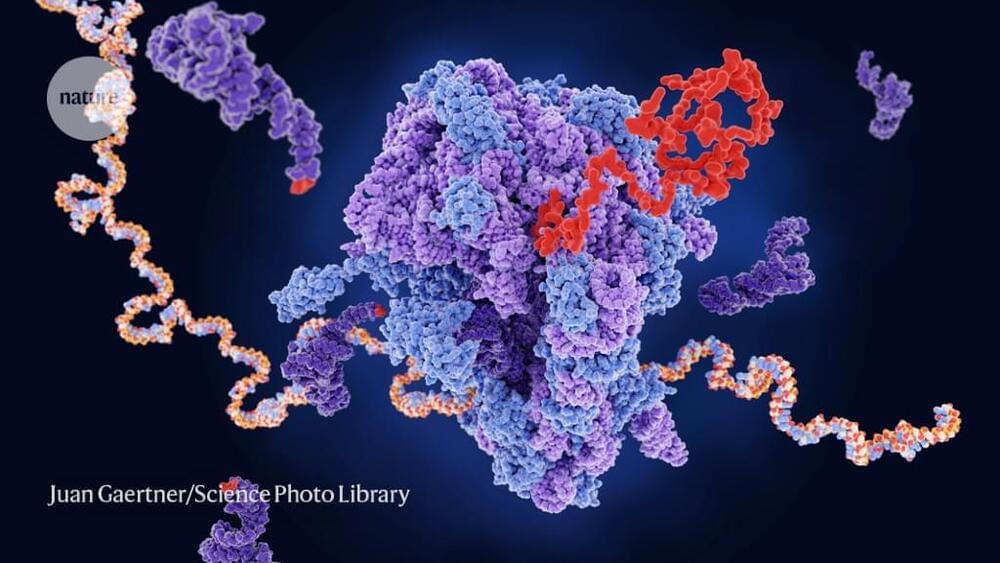By modifying the blueprint of life, researchers are endowing proteins with chemistries they’ve never had before.



Matching the sight and sound of speech—a face to a voice—in early infancy is an important foundation for later language development.
This ability, known as intersensory processing, is an essential pathway to learning new words. According to a recent study published in the journal Infancy, the degree of success at intersensory processing at only 6 months old can predict vocabulary and language outcomes at 18 months, 2 years and 3 years old.
“Adults are highly skilled at this, but infants must learn to relate what they see with what they hear. It’s a tremendous job and they do it very early in their development,” said lead author Elizabeth V. Edgar, who conducted the study as an FIU psychology doctoral student and is now a postdoctoral fellow at the Yale Child Study Center. “Our findings show that intersensory processing has its own independent contribution to language, over and above other established predictors, including parent language input and socioeconomic status.”

Check out Fred Evrard’s Book (HOW MY IMMUNE SYSTEM BEAT CANCER) HERE: https://amzn.to/3MGjOE1
FRED EVRARD’S YOUTUBE CHANNEL:
https://youtube.com/channel/UCnJF5tsWLdZ7mZnjM5r0GrQ
AMAZON
Guy Tenenbaum Youtube Channels:
http://youtube.com/c/CancerTherapy.
http://youtube.com/c/SurviveFromCancer.
The cancer study, Dr. Berg and Guy Tenenbaum sponsored:
http://jscholaronline.com/full-text/JOCR/3_104/Inhibition-of…reases.php.
Inhibition of SCOT and Ketolysis Decreases Tumor Growth and Inflammation in the Lewis Cancer Model.

Scientists have used stem cells to create structures that resemble human embryos in the lab, in a first that has prompted calls for stricter regulation in the rapidly advancing field.
Several different labs around the world have released pre-print studies in the past seven days describing their research, which experts said should be treated with caution as the research has not yet been peer-reviewed.
The labs used different techniques to encourage human embryonic stem cells, which can become any type of cell, to self-assemble into a structure that resembles an embryo—without needing sperm, an egg or fertilization.
ALBUQUERQUE, N.M. — In people with epilepsy, seizure-alert dogs can smell small changes in body chemistry and warn of an impending seizure an hour or more before it occurs. Inspired by this feat of nature, a team of researchers has sniffed out a way to replicate the ability with technology.

Immune checkpoint inhibitors (ICIs) have improved the landscape of cancer research over the past decade. These therapies, which target a patient’s own immune system aiming to make it stronger and more equipped to fight cancer, have provided novel and beneficial therapeutic options for patients with advanced and metastatic disease.
While ICIs can induce long-term responses and cures in patients with limited therapeutic options, they present significant challenges. First, different patients exhibit different levels of responsiveness to ICIs. So, when one patient achieves a cure, another with a similar type of cancer may remain non-responsive. While we don’t fully understand the reasons behind the disparate responsiveness of ICIs, this remains an active area of research globally. Second, ICI use can elicit toxicities known as immune-related adverse events (irAEs). In some patients irAEs can be managed and thus tolerable, especially given the anti-cancer effects. However, some patients experience severe irAEs that can significantly hinder the quality of life of cancer survivors. In some cases, serious and life-threatening irAEs can even require treatment discontinuation.
A pre-clinical study recently published in the Journal of Clinical and Experimental Cancer Research explores a potential regimen that may help confront both of these challenges. The researchers hypothesized that ICIs, if targeted directly to the lymph node (LN), could both enhance the anti-tumor response and reduce the associated irAEs.
Tell summer to go to … Well, at least keep from overheating indoors—or outdoors—with the right tips and gear.

